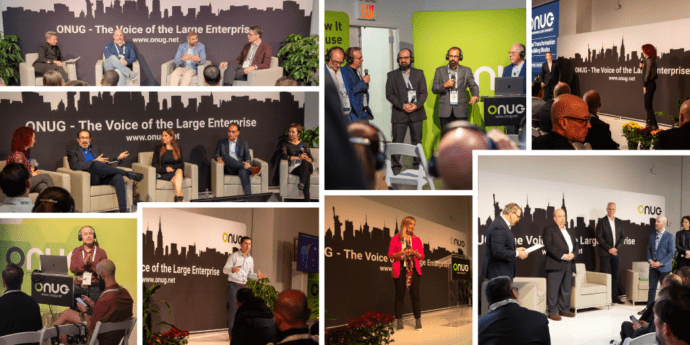
Bulk Procurement of Internet / WAN Connectivity: Getting the Best Outcome
If you’ve gone through an MPLS to SD-WAN transition or simply operate a network with 100+ sites, you’ve likely undergone some form of “bulk” connectivity procurement in the past. Bulk procurement comes with drawbacks – complex RFP creation, tons of quoting to manage, lengthy contracting, and painfully complex installations. That said, I’ve found that IT leaders often espouse the benefits of bulk procurement. Why? The bulk discount! If you buy many circuits at once, you’ll end up with a lower price per Mbps on average than you would if you’d bought them individually, right?.
Unfortunately, the way most enterprises go about bulk network procurement doesn’t yield the lowest unit costs, and certainly not the best network operations outcomes. In this blog, I will present a few sourcing principles you can utilize to get the best possible bulk procurement outcomes. Let’s define some key terms first.
Type-1 vs. Type-2 Connectivity
Type-1 access represents connectivity delivered end-to-end by the same provider. This means that the same company that owns the last-mile fiber is also the company that assigns your IP addresses and routes your traffic over their own network.
Type-2 access represents connectivity delivered by a service provider leveraging third-party fiber. Type-2 access is necessary for a provider to deliver service where they don’t have fiber. Example: You order AT&T internet service in Boston, which is outside of AT&T’s footprint. To solve this, AT&T leases a layer-2 private line from Verizon to connect the service address to AT&T’s closest point of presence. AT&T then backhauls the traffic from the service address to the nearest AT&T POP over the Verizon connection.
You’ll pay a premium to buy type-2 access from a carrier, as they have to cover the cost of purchasing the underlying service, plus their own markup. With type-2, you’ll also have more frequent issues with installations and troubleshooting, as your ISP is coordinating with another ISP to deliver service.
Bulk Sourcing Principles in Practice
Now, let’s see how type-1 and type-2 access impact bulk procurement in the real world. Let’s consider an enterprise with 100 locations that needs to source 100 dedicated internet circuits. Let’s also assume that this enterprise’s sites are distributed evenly across AT&T, Verizon, and Lumen’s footprints. Normally, this enterprise will ask each individual provider to bid on the project. Each provider gets the same list of addresses for all 100 sites. The bids come back, you negotiate, analyze, and choose the lowest bid. This is the RFP strategy most companies take.
In this case, you may get bulk discounts from each provider due to the 100-service order, but you won’t get the best price. Verizon needs to order from Lumen and AT&T outside of their footprint, Lumen needs to order from AT&T and Verizon outside of their footprint, and AT&T needs to order from Lumen and Verizon outside of their footprint. Each carrier’s costs to deliver service increases in this scenario, as every carrier must provide type-2 connectivity.
What we have now is blended type-1 and type-2 pricing across all sites, from all bidding providers. The average cost per Mbps is above the “best price” at every site, but it’s hard to see because all of the RFP responses incorporate the same flaw, so the RFP responses look consistent. To make matters worse, the company in this example is also inadvertently making life much more difficult for itself:
- The RFP takes forever. Type-2 bids take longer because each carrier is quoting multiple other carriers.
- Implementation is likely to be problematic. The company will be forced to communicate indirectly with Lumen and Verizon through the AT&T project manager.
- When services go down, it will take longer to repair. Longer MTTR due to indirect communications with providers.
- You lose fidelity in the makeup of your network. In many cases, these type-2 setups are not made clear to end users. This can create situations where an enterprise believes that they have last-mile provider diversity, but really don’t.
So, how do you do this properly? You must move the RFP exercise off of the carrier’s playing field, which they have purpose-built to put you at a disadvantage on.
Forcing the Ideal Bulk Sourcing Outcome
How do you force the ideal bulk procurement outcome? Utilize network infrastructure data to route quote requests only to vendors able to provide Type-1 service at each site. At Lightyear when we have a bulk-site bid request, addresses are run through our network intelligence platform. This allows us to see who all of the carriers are at each address: who is on-net, who is near-net, distance to fiber, etc.
This data allows us to algorithmically request quotes for service addresses from the providers that can deliver as type-1, in bulk. Instead of Verizon, Lumen, and AT&T getting an RFP for 100 sites, they get only the request for services that fall within their last-mile footprint. When dealing with type-1 services, understanding if costs are in line with “best pricing” becomes much easier. This solves the problems we outlined in the example above:
- The pricing we receive back will be from optimal type-1 providers, enabling the best pricing: potentially 25% lower than type-2.
- The RFP responses are returned much faster
- Implementations are far more likely to be consistent and predictable, and the mean-time-to-repair will be reduced
- We will know exactly how the service is being delivered, and can validate last-mile and ASN diversity with firsthand information.
The drawback of this strategy is that you now need to manage multiple carriers throughout the service’s lifecycle – more bills, points of contact, and frustration.
This is where Lightyear’s software steps in! Lightyear’s platform project manages implementations in bulk on your behalf. If implementation issues arise, our professional services team will have it escalated immediately. Post-install, services are added to our Network Inventory Manager, which acts as your network system of record that tracks details like costs, circuit IDs or IP addresses, and much more.
In fact, we actually just launched a new Bulk Site Procurement software tool that runs this entire process, from RFP through inventory tracking, on your behalf (learn more here). Feel free to book a demo with us, and we’d love to help you get to the best network outcome possible!



